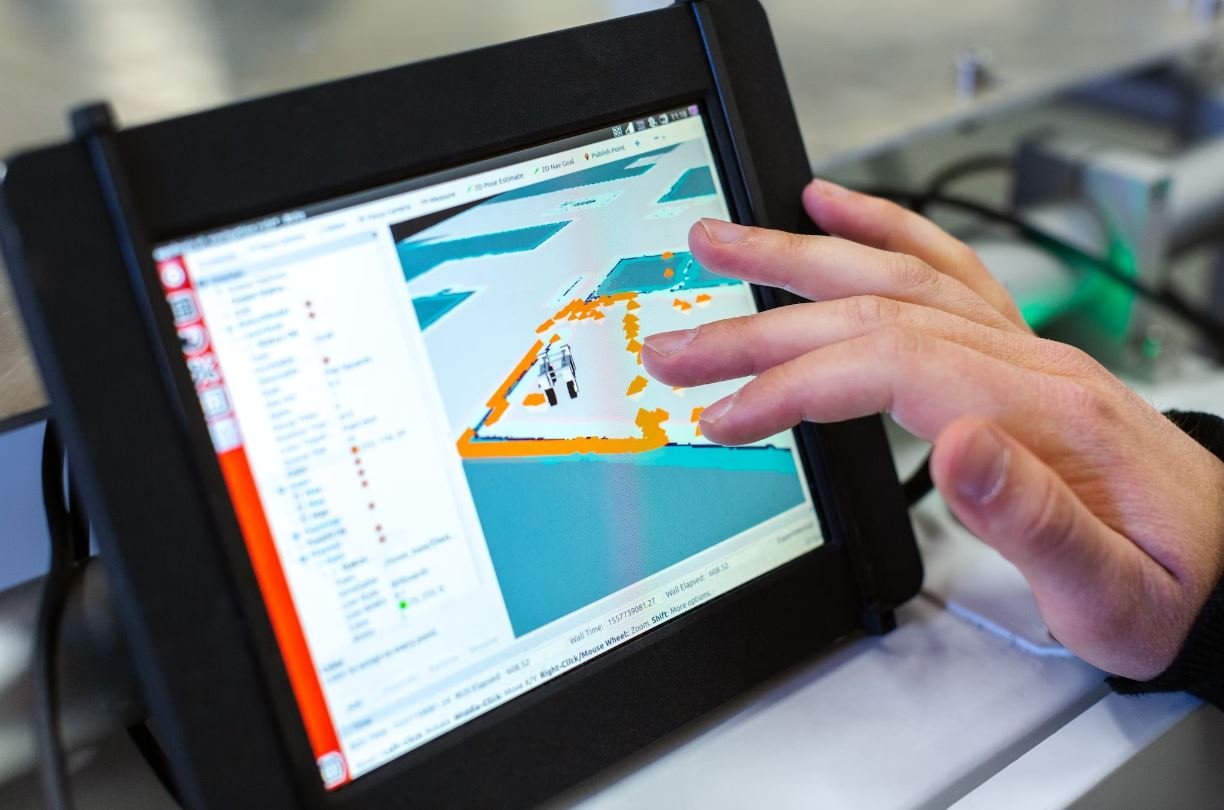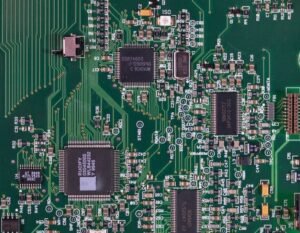Where Is Tesla Model 3 Battery?
When it comes to electric vehicles, Tesla has established itself as a leader in the industry. The Tesla Model 3, one of the company’s most popular models, boasts impressive range and performance. But have you ever wondered where exactly the battery of the Model 3 is located? In this article, we will explore the positioning of the Model 3 battery and its impact on the vehicle’s performance and handling.
Key Takeaways
- The Tesla Model 3 battery pack is located on the floor of the car.
- The battery’s low placement contributes to a lower center of gravity, improving stability and handling.
- The battery pack is composed of thousands of individual lithium-ion battery cells.
Unlike conventional gasoline-powered cars, the Tesla Model 3 has a unique architecture designed specifically for electric vehicles. The battery pack of the Model 3 is not located in the traditional engine compartment or trunk space. Instead, it is situated underneath the car’s floor. This clever packaging allows for maximum interior space and weight distribution, resulting in a more balanced vehicle.
Interestingly, the location of the Model 3 battery pack contributes to more than just spaciousness. By placing the battery low in the chassis, Tesla achieves a lower center of gravity for the vehicle. This design choice significantly enhances the car’s stability and handling, allowing for better cornering and overall performance at high speeds.
Battery Pack Composition
The Tesla Model 3 battery pack is composed of numerous lithium-ion battery cells. These cells are bundled together to form modules, which are then combined to create a single battery pack. The battery pack found in the Model 3 is typically made up of thousands of individual cells, each contributing to the car’s overall energy capacity.
Battery Range and Charging
One of the key factors in an electric vehicle’s appeal is its range. The Model 3 offers different battery options that provide varying levels of range. Here are a few battery configurations and their approximate ranges:
| Battery Option | Approximate Range |
|---|---|
| Standard Range Plus | Approximately 263 miles |
| Long Range | Approximately 353 miles |
| Performance | Approximately 315 miles |
In addition to range, it is important to consider charging capabilities. Model 3 owners can charge their vehicles using Tesla’s Supercharger network or other compatible charging infrastructure. The Supercharger network allows for rapid charging, providing approximately 170 miles of range in just 30 minutes.
Battery Safety
Tesla takes battery safety very seriously. The Model 3 battery pack is equipped with various safety features and measures to minimize the risk of fire or other hazards. These include a proprietary cooling system for temperature management and advanced monitoring systems that constantly monitor the battery’s state.
Environmental Impact
Electric vehicles have gained popularity due to their environmental benefits. The Model 3, with its battery-powered operation, produces zero tailpipe emissions. By utilizing renewable energy sources for charging, such as solar or wind power, the Model 3 can further reduce its environmental impact.
Final Thoughts
The Tesla Model 3 battery is a crucial component that contributes to the car’s performance, range, and environmental impact. Its location beneath the vehicle’s floor optimizes weight distribution and enhances handling. With advancements in battery technology, electric vehicles like the Model 3 continue to revolutionize the automotive industry.

Common Misconceptions
1. The Tesla Model 3 battery is located in the car’s trunk.
- The misconception: Many assume that the Model 3 battery is housed in the trunk of the vehicle.
- The reality: In reality, the Model 3’s battery pack is located on the floor of the car, between its two axles.
- This configuration allows for a lower center of gravity, improved handling, and increased stability.
2. The Tesla Model 3 battery is prone to catching fire.
- The misconception: There is a common belief that the Model 3 battery is susceptible to catching fire easily.
- The reality: Like any other lithium-ion battery, there is a possibility of fire, but it is extremely rare and the vehicle is equipped with an advanced battery management system to minimize this risk.
- Additionally, Tesla has implemented several safety measures, such as a reinforced battery pack design, cooling systems, and fire suppression systems, to ensure the safety of its vehicles and occupants.
3. The Tesla Model 3 battery needs frequent replacement.
- The misconception: Some people believe that the Model 3 battery degrades quickly and needs to be replaced often.
- The reality: Tesla has designed the Model 3 battery to have a long lifespan, with a warranty that covers up to 8 years or 120,000 miles (whichever comes first).
- The battery degradation is minimal, and Tesla continuously improves its battery technology to ensure longevity and performance.
4. The Tesla Model 3 battery cannot be charged using a regular power outlet.
- The misconception: Many think that the Model 3 requires specialized charging equipment and cannot be charged using a regular household power outlet.
- The reality: While a standard power outlet may not provide sufficient power for optimal charging speed, Tesla provides adapters that allow the Model 3 to be charged using a regular 120V or 240V household outlet.
- However, for faster charging, it is recommended to use a dedicated Tesla Wall Connector or a third-party charging station.
5. The Tesla Model 3 battery is similar to the batteries used in smartphones.
- The misconception: Some assume that the Model 3 battery is similar to the batteries used in smartphones, which are known to degrade quickly.
- The reality: The battery technology used in the Model 3 is different from smartphone batteries, as it is designed with a focus on durability, performance, and longevity.
- Tesla’s battery technology incorporates advanced thermal management systems and intelligent charging algorithms to ensure optimal battery health and lifespan.

Introduction
The Tesla Model 3 is a groundbreaking electric vehicle known for its innovative features and impressive performance. One of the key components that make the Model 3 so exceptional is its advanced battery system. In this article, we explore various aspects of the Tesla Model 3 battery, from its capacity and range to the cutting-edge technology behind it.
Battery Specifications
The following table showcases the battery specifications of the Tesla Model 3:
| Battery Specification | Value |
|---|---|
| Battery capacity | 54 kWh/62 kWh/75 kWh |
| Range (EPA estimated) | 263 miles/310 miles/335 miles |
| Charge time (Supercharger V3) | 15 minutes (15% to 80% charge) |
| Power output | Standard Range Plus: 211 horsepower, Long Range AWD: 346 horsepower, Performance: 450 horsepower |
Battery Types
The Tesla Model 3 is equipped with different battery types, offering various performance levels and range options. Here are the battery types available:
| Battery Type | Description |
|---|---|
| Standard Range Plus | Affordable option with a balanced range and power output |
| Long Range AWD | Enhanced range and superior performance with all-wheel drive |
| Performance | Ultimate power and acceleration capabilities for sporty driving |
Battery Manufacturing
Curious about how Tesla produces these remarkable batteries? Here’s a glimpse into their innovative manufacturing process:
| Manufacturing Step | Description |
|---|---|
| Gigafactory 1 | The primary facility in Nevada, where battery cells are produced |
| Battery Cell Production | The process of creating cylindrical battery cells using advanced machinery |
| Quality Assurance | Stringent testing to ensure that each battery meets Tesla’s high standards |
| Battery Pack Assembly | The final stage where cells are combined to create battery packs |
Recycling Initiatives
Tesla is committed to sustainability and responsible battery disposal. Here are some of the company’s recycling initiatives:
| Recycling Initiative | Description |
|---|---|
| Battery Take-Back Program | Tesla offers a program to safely and compliantly recycle end-of-life batteries |
| Material Recovery | Efforts to recover essential raw materials from discarded batteries |
| Reduction of Waste | Minimizing waste generation through energy-efficient manufacturing processes |
Battery Safety
Ensuring the safety of the Tesla Model 3’s battery is of utmost importance. Here are some key safety measures and features:
| Safety Feature | Description |
|---|---|
| Thermal Management | An advanced cooling system regulates battery temperature to maximize performance and safety |
| Overcurrent Protection | Circuitry designed to prevent excessive current flow and protect the battery |
| Crash Safety | Reinforcements and impact-absorbing structures safeguard the battery pack during accidents |
Future Developments
What does the future hold for Tesla’s battery technology? Check out some exciting possibilities below:
| Development | Description |
|---|---|
| Higher Energy Density | Advancements to increase the amount of energy stored per unit of battery volume or weight |
| Fast Charging Improvements | Ongoing research to reduce charging time while maintaining battery lifespan |
| Second-Life Use | Exploration of options for repurposing used batteries in other applications |
Battery Performance in Extreme Conditions
How does the Tesla Model 3 battery perform in extreme weather conditions? Let’s take a look:
| Condition | Result |
|---|---|
| Extreme Cold | Efficiency reduction but still maintains reasonable range and performance |
| Extreme Heat | While thermal management systems maintain battery temperature, extreme heat can impact range slightly |
Battery Warranty
Tesla provides a comprehensive warranty on the Model 3 battery to ensure customer satisfaction and peace of mind:
| Warranty Component | Warranty Details |
|---|---|
| Battery & Drive Unit | 8 years or 150,000 miles (whichever comes first) for Long Range AWD and Performance models |
| Battery & Drive Unit | 8 years or 100,000 miles (whichever comes first) for Standard Range Plus models |
Conclusion
The Tesla Model 3 battery is a remarkable piece of technology, offering extensive range, impressive performance, and a commitment to sustainability. With ongoing developments and advancements, the future of Tesla’s battery technology holds even more promise. Whether it’s the battery’s manufacturing process, safety features, or recycling initiatives, Tesla continues to lead the way in electric vehicle innovation.
Frequently Asked Questions
Where is the battery located in the Tesla Model 3?
The battery in the Tesla Model 3 is located beneath the floor of the car. It extends from the front to the rear of the vehicle, providing stability to the vehicle and lowering its center of gravity. This unique design allows for efficient use of space and helps optimize weight distribution.
How big is the battery in the Tesla Model 3?
The battery size in the Tesla Model 3 varies depending on the version and variant of the vehicle. Currently, the standard range models have a battery capacity of around 54 kWh, while the long-range models have a larger battery capacity of approximately 75 kWh. These figures may vary slightly over different model years or with specific configurations.
What type of battery does the Tesla Model 3 use?
The Tesla Model 3 is equipped with lithium-ion batteries. These batteries have high energy density, allowing for longer driving ranges and enhanced performance compared to traditional lead-acid or nickel-metal hydride batteries. The use of lithium-ion batteries also contributes to the sustainability and eco-friendliness of the vehicle.
Can the Tesla Model 3 battery be upgraded?
Currently, Tesla does not offer an official battery upgrade program for the Model 3. However, it’s worth noting that Tesla has made improvements to battery technology over time, resulting in increased range capabilities for newer versions and models. Upgrades or improvements to the battery may become available in the future, but this information would be provided by Tesla directly.
How long does the Tesla Model 3 battery last?
The lifespan of the Tesla Model 3 battery will depend on various factors, including usage patterns, charging habits, and environmental conditions. On average, Tesla batteries are designed to have a long lifespan, with the ability to retain a significant portion of their capacity even after several years of use. Tesla also offers a warranty that covers the battery for a certain period or mileage, ensuring peace of mind for owners.
Can the Tesla Model 3 battery be replaced?
If a Tesla Model 3 battery needs to be replaced, it can be done by a Tesla Service Center. The replacement process involves removing the old battery pack and installing a new one. It’s important to note that battery replacements are relatively rare occurrences and are usually only necessary in special circumstances, such as significant degradation over time or in the event of an accident.
Can the Tesla Model 3 battery be recycled?
Yes, Tesla is committed to sustainable practices and offers a battery recycling program for their vehicles. When a Tesla battery reaches the end of its useful life, it can be returned to Tesla for proper recycling. Through this program, Tesla aims to extract valuable materials from the batteries and minimize the environmental impact associated with battery disposal.
How is the Tesla Model 3 battery cooled?
The Tesla Model 3 utilizes a sophisticated thermal management system to cool the battery. The system includes various cooling channels and liquid cooling loops that circulate coolant around the battery pack. This helps maintain the battery cells at an optimal temperature range, ensuring efficient performance, longevity, and safety.
Can the Tesla Model 3 battery be charged at home?
Yes, the Tesla Model 3 can be charged at home using a standard wall outlet or by installing a dedicated Tesla Wall Connector. The vehicle comes with a Mobile Connector that can be plugged into a regular electrical socket for convenient charging. However, to maximize charging speed and convenience, many Model 3 owners choose to install a Tesla Wall Connector, which provides faster charging rates.
What is the range of the Tesla Model 3 on a single charge?
The range of the Tesla Model 3 varies depending on the specific version and configuration. As of the most recent models, the long-range versions of the Model 3 have an estimated range of around 353 miles (568 kilometers) on a single charge, while the standard range models have a range of approximately 263 miles (423 kilometers). It’s important to note that range may vary based on driving conditions, speed, terrain, and other factors.




